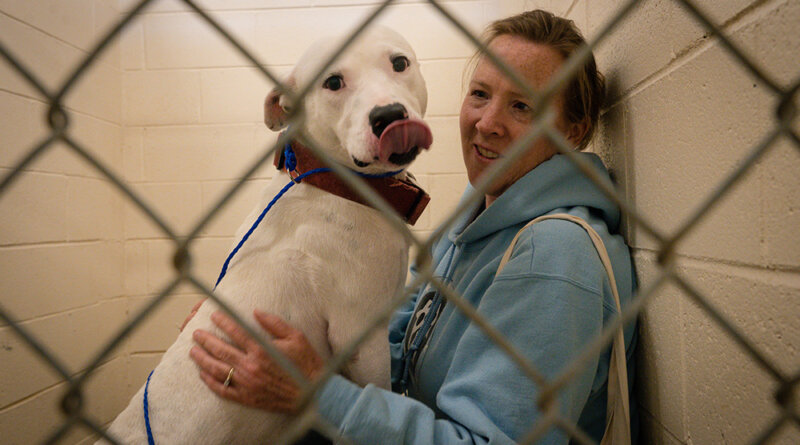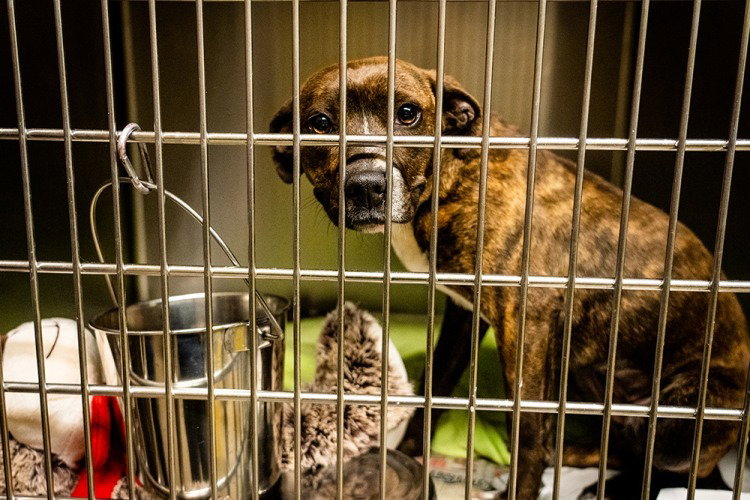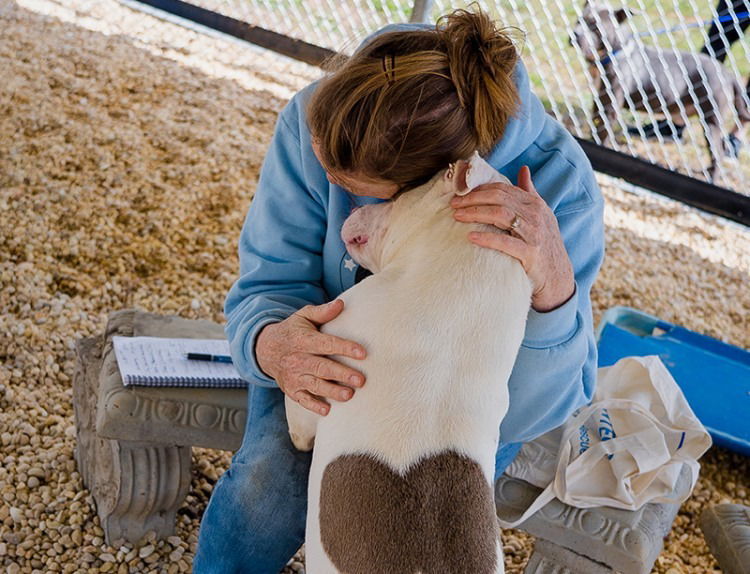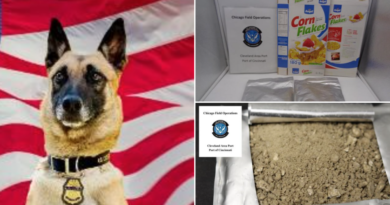The Economics of Animal Rescue
It’s not that people don’t care, it’s that they don’t know. That was the mantra I had been chanting ever since returning from a tour of animal shelters in the rural south. I’d met remarkable people working tirelessly to save as many dogs as they could, but many times coming up short. Too many adoptable dogs were not just dying, but living for weeks or months in animals shelters under stressful conditions without basics like flea/ tick or heartworm preventives, bedding, toys, treats, regular exercise or human contact.
Some of the animal shelters I visited had no budget for spay/neuter, so even when dogs were adopted, their puppies would show up at the shelter a few months later. With so many dogs, there was little time and not enough volunteers for daily play time or walks, enrichment, or simply a few good butt scratches. The stress of life in an animal shelter broke down the hardiest of dogs.
Even for me, a person who has fostered more than a hundred dogs, volunteered thousands of hours and was up to her eyeballs in dog rescue, the situation in these shelters was stunning. I simply could not believe that it was as bad as it was and nobody was fixing it. Until I saw it myself. As I left the shelters, I knew I would be back. People needed to know.
So, six months later, I returned to the shelters. This time, I brought a team of volunteers and a plan to not just look, but to help and to shine a spotlight on situations that should not exist.
GET THE BARK NEWSLETTER IN YOUR INBOX!
Sign up and get the answers to your questions.
Our team comprised eight volunteers from Operation Paws for Homes, an all-breed foster-based rescue. It included a professional photographer, the former head of the rescue’s dog-bio writing team, an engineer, a former vet tech, and a social media whiz-kid hailing from Maryland; Washington, DC; Virginia; and south-central Pennsylvania. We visited seven animal shelters in six days, offering to help in any way we could.
We walked countless dogs, played with them, bathed them, clipped nails and cleaned ears, even picked up poop. We gathered information about the dogs we met and passed it on to our rescue group, pleading Please pull this dog.
We helped shelter staff write bios, develop social media strategies, upload pictures and set themselves up on Petfinder. We assembled dog beds, built a roof for an outdoor puppy play area and gave engineering advice. Our photographer, Nancy Slattery, worked her tail off, taking thousands of pictures of hundreds of dogs, then toiling late into the night to edit the photos and send them to the shelters for their use.
Every day, we posted the situations, the needs of the shelters and the dogs on our Facebook page and asked people to share. We included links to the shelters’ Amazon wish lists and started a Facebook fundraiser to help one shelter purchase a desperately needed commercial washer/dryer.
We did a lot. And we saw a lot.
A Haunting Experience
The first six animal shelters we visited were already full and it was only the first week of April; puppy and kitten season had barely begun. While some were holding their own and hadn’t yet had to put down many adoptable dogs, others had been forced to euthanize 30 percent or more of the dogs in their shelters. And every single one of them will be compelled to euthanize for space if the summer brings a large hoarding case, or heartworm continues to rage out of control as a result of last year’s floods, or the economy takes a downturn.
As I led dog after dog out for a walk or to have a picture taken, I wondered whether this was a dog who would be part of that 30 percent. At one animal shelter, I didn’t have to wonder. Like many of the county shelters, there were two sides. One side was run by a humane society and had volunteers and staff who were responsible for nurturing and adopting out the dogs. These dogs would all eventually find homes; the humane society would be certain of that.
The other side of the building was run by animal control; these dogs were brought in by Animal Control Officers (ACOs). Some dogs had been seized during arrests, some were there because they’d bitten a person and so had a mandatory “bite hold,” a few had been turned in by owners. Most, however, had been picked up by the ACOs as strays.
After their stray hold and assessment, some dogs would be released to the humane society, but others would never see that side of the building. Their kennel cards were slashed with a large X, which meant that the dog in that kennel would be euthanized as necessary for space.
We all struggled with our emotions as we walked down the row, pausing at the kennels with the Xs to give extra treats or reach a hand around the bars to touch these condemned dogs. Allen, a white dog with perhaps Boxer heritage, was only a year old; he received his X because he was “dog aggressive.” His owner had turned him in to die. Allen was starved for attention and leaned against the fence, seeking any kind of human touch.
I asked about Sheba, a cute black puppy with a white nose. She was friendly and eager and grateful for the treats I passed through the fence. I scanned her card, looking past the enormous X that was scrawled across it to read that she was picked up as a stray and had no bite history. Her breed was listed as Pit Bull mix, and she was only six months old. I asked if we could get her out, maybe play with her a bit.
We led Sheba to a narrow, concrete area at the end of the kennels and played with her off-leash. Excited to be out of her kennel, she jumped on us and licked our teary faces, zooming back and forth in the small space and pouncing on the tennis ball we tossed. She was just a happy puppy.
When I put her away, I walked three kennels down to study another young black puppy who could have been Sheba’s littermate. They looked so alike that later we would struggle to tell them apart in their pictures. This dog’s name was Thea. She was 10 months old and listed as Lab-mix. Across her kennel card was a large note indicating that a rescue would be picking her up on Tuesday. She was safe. What a difference a word makes—the difference between life and death.
Later, after we watched Sheba dog-test with both a male and female dog and pass with flying colors (she only wanted to play with each), I asked how such an adorable, adoptable dog came to have an X on her kennel card.
“Breed, color and space,” was the answer.
To be clear, the ACOs are not the bad guys; it’s not their fault there are too many dogs turning up at shelters. Their job description isn’t to market and adopt out the dogs; they are required to handle and house animals that become a “nuisance” in one form or another. And they have no control over how many kennels are available.
Transparency Saves Lives
It’s very tempting to be angry about the Xs, but actually, I’m grateful for them. Why should a shelter hide the fact that they plan to euthanize a dog? Maybe if more animal shelters were as transparent, the public would be outraged enough to stop the killing. There are Xs on plenty of other dogs in the other shelters we visited, but they only show up on a list or on a computer far from the public’s sight. These Xs, at least, increased the urgency and hopefully the likelihood that a dog would be pulled by a rescue.
Would we have felt as committed to saving Sheba if she didn’t have an X? And what about the dogs with the invisible Xs in the other shelters we visited? I worry for Ghost and Short and Kimbo, three large Pit Bulls I visited with at another shelter. Despite their loving, happy energy, their kennel cards could very likely be marked with invisible Xs. If the cards had instead been covered with that hand-scrawled X, would it give them a better shot at being rescued? Would it make somebody do something?
At our last animal shelter visit—South Carolina’s Anderson County PAWS, a true no-kill shelter—we met with Kim Sanders, DVM, who talked about the importance of transparency in saving dogs. She expects it of her staff and her animal shelter. She demands transparency from everyone involved in saving animals at PAWS. No lying, no deceiving. No pretending the situation isn’t what it is. When asked how she took Anderson County from a high-intake, highkill shelter where 50 percent of the animals were being euthanized to no-kill in a matter of months, she says, “You just stop killing animals,” as though it were as easy as that.
And it is for PAWS. They have implemented program after program to address the issues. Their building is a large, bright, welcoming place, full of friendly staff ready to help visitors adopt an animal or keep the one they may be thinking of turning in.
While our Rescue Road Trip team was visiting PAWS, we met a large, butt-waggingly happy Pit Bull mama and her six baby hippos—puppies so fat that their legs looked like toothpicks jutting out of plump sausages. The mama had been brought in alone two days prior, teats heavy with milk. The ACO said he couldn’t find any puppies.
Dr. Sanders sent her staff back out to the area with the mama dog, who led them directly to the home where the puppies were. The staff talked to the owner, who obviously loved his dogs but couldn’t afford proper vet care. They offered to take the puppies, the mama dog and the other dogs he owned back to PAWS, where they would be vaccinated, spayed or neutered, microchipped, and checked for heartworm. When the puppies were old enough, they would be adopted out; the rest of the dogs would be returned to him. While the animals were being treated, the staff took straw, kennels and dog food to the owner so he would have what he needed to care properly for his animals when they were returned.
Consider a different scenario, one in which the mama dog came into one of the other shelters we’d visited. She would have been placed in the animal control side of the building. With no microchip, there would be no way of knowing whose dog she was. If her owner couldn’t afford the fee to collect her, he would likely leave her there. She would mourn the loss of her puppies and her person. She would be frightened and confused. She might be defensive; she’d definitely be stressed. In a matter of weeks, her kennel card might be covered with a big X. Or, if she was lucky and made it to the humane society side of the building, she might linger there for months since Pit Bulls take longer to be adopted than most dogs.
Smart Business
“It’s a business decision,” says Dr. Sanders. “It costs us less to treat the dog and return it to its owner and give him what he needs to care for it than to confiscate it, house it for weeks or months, and get it adopted.” Beyond that, she points out, “They’re bonded. Why should I break them apart? He loves the dog and it was clear she loved him.”
Which brings us to one of the biggest hurdles to pet ownership and perhaps one of the reasons our shelters are so full: money. It costs a lot to properly care for a pet, but should people be denied a dog simply because they are poor? I don’t have to tell any reader of this magazine how much a dog can enrich and inspire a life.
Dr. Sanders told us about a homeless man who brings his dog to the animal shelter each month to get a heartworm preventive. The animal shelter has offered to give him a six-month supply, but he has nowhere to keep it. So he drops by each month for the medication and a small bag of dog food. Sometimes when he comes in, he asks if he can bathe the dog, and the staff direct him to their well-equipped grooming room. “That dog has such a great life; he lives better than my own dogs,” says Dr. Sanders. The dog is with his person 24/7 and never wears a leash.
It’s a heartwarming story but again, do the math: it’s cheaper for PAWS to give the man his dog’s heartworm preventive each month than to deny him because he can’t afford it. In the region’s hot, humid climate, his dog would eventually develop heartworms and end up back at PAWS for expensive treatment and a lengthy stay.
PAWS has other programs in place to help people keep their pets. When someone comes to turn one in, instead of blindly accepting the animal, the staff offer the owner other options. Does the animal need vet care they can’t afford? Do they need training help? Dog food? Cat litter? If they are relinquishing their pet because they are moving or lost a job or have to serve a short prison sentence, PAWS will actually hold their dog for them for up to 45 days, maybe longer depending on the situation. While the dog’s at PAWS, he or she is microchipped, neutered or spayed, and the owner is educated about heartworm. All things that may cost a little now but save big in the long run.
The philosophy of transparency and the consideration not just for the animals’ physical well-being, but their emotional well-being as well makes Anderson County PAWS a special place, but it’s also smart business. And saving dogs, like pretty much everything in this world, comes down to business.
What we need is a better business plan. Too many dogs are dying for lack of one.







